
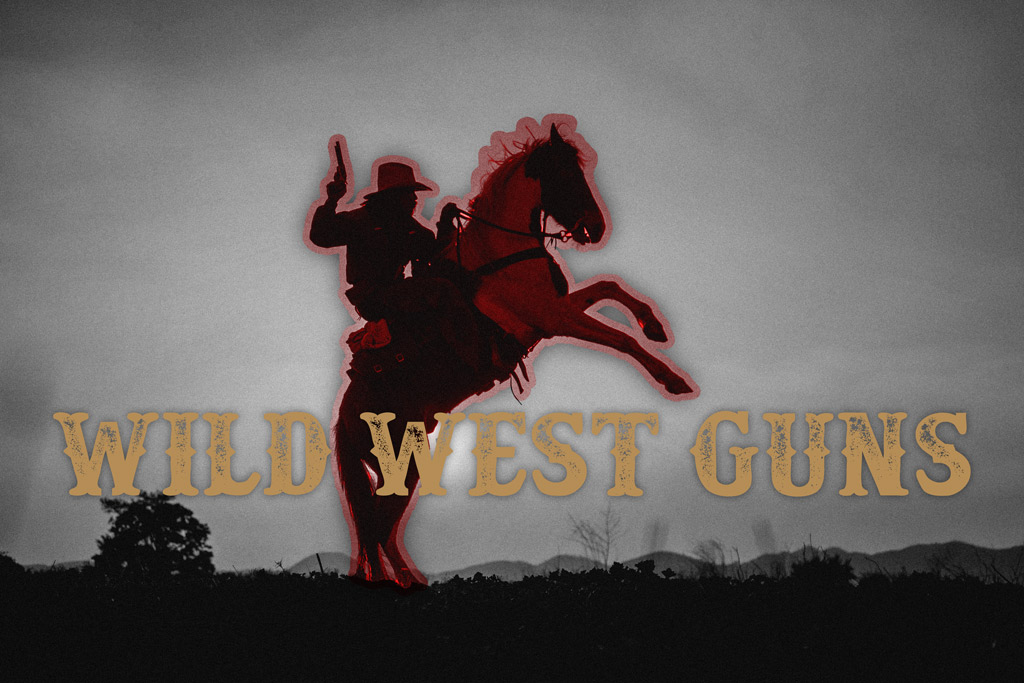
In the annals of American history, few periods capture the imagination quite like the Wild West. A time of pioneering spirit, lawlessness, and gold prospecting, it’s also a period that its firearms helped define. Whether a pistol, rifle, or shotgun, Wild West guns are synonymous with this 19th-century period in our country’s history. This was a time when lawmen and lawbreakers clashed, and the fastest gun sometimes determined who ruled an entire town.
These guns, from the iconic Colt Single-Action Army to the Winchester Model 1873, were more than mere survival tools. In this harsh, untamed frontier, they were symbols of the times. This article delves into the fascinating history and evolution of seven guns of the Wild West, shedding light on their integral role in shaping the American frontier.
Let’s start with a revolver that earned the name “The Peacemaker” for its role in winning the West.
Wild West Guns
Colt Single-Action Army
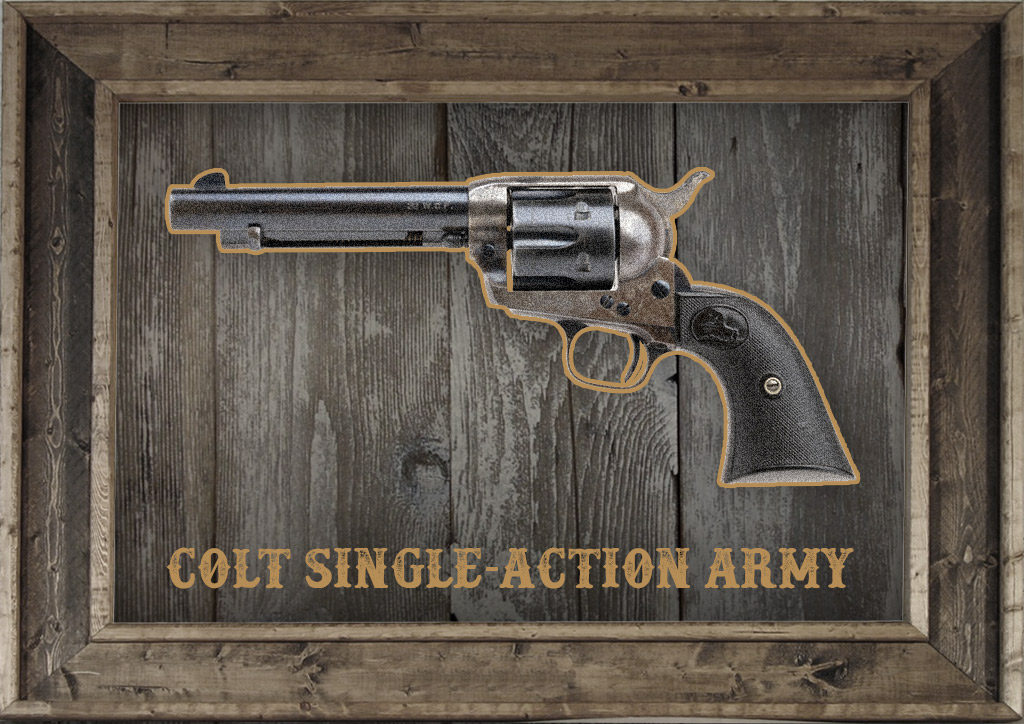
Colt Single-Action Army revolver chambered in .45 Colt.
William Mason and Charles Brinckerhoff Richards designed the iconic Colt Single-Action Army revolver (the Peacemaker) in 1873. Manufactured by Colt’s Patent Fire Arms, it has chambered various calibers, including the legendary .45 Colt, the .44-40 WCF, and the .38-40.
Because of its reliability and accuracy, the Single Action Army was a top choice among lawmen and outlaws in the Old West. Its profound impact on the era was so significant that it earned the title “The Gun That Won the West.” Often appearing in cowboy movies, this firearm became a symbol of the frontier and the rugged individualism of the era. It saw widespread use in the hands of cattle ranchers and stagecoach guards to soldiers and law enforcement officers. It was integral in shaping the history and culture of the American West.
Colt Model 1851 Navy
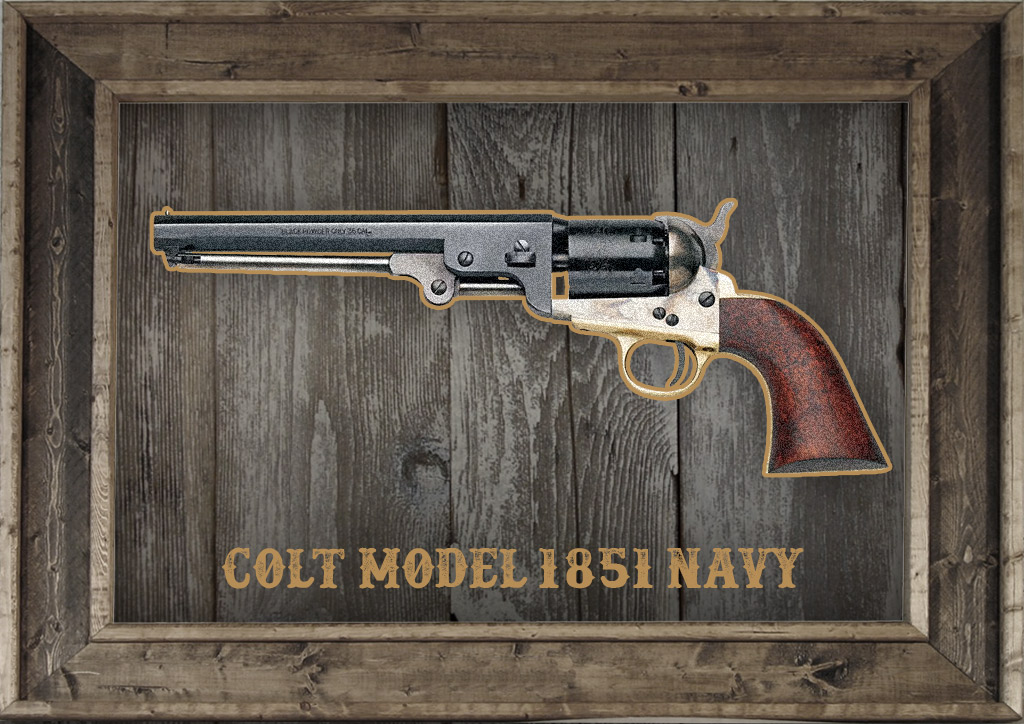
The six-shot Colt Model 1851 Navy revolver designed by Samuel Colt.
The Colt Model 1851 Navy, a six-shot cap and ball revolver, was Colt’s most popular percussion revolver. The legendary Samuel Colt designed it between 1847 and 1850. Colt’s Patent Fire Arms Manufacturing Co. produced almost 250,000 between 1850 and 1873. This .36 caliber revolver saw widespread use during the mid-19th century. Its popularity became especially notable in the Wild West, where outlaws and lawmen alike admired its balance, dependability, and lethal accuracy.
Cavalry and artillery personnel were issued the Model 1851 during the Civil War. And Wild Bill Hickock reportedly carried it as a law enforcement officer in several western towns. The Model 1851’s rich history is deeply intertwined with the American Frontier, serving as an iconic era symbol.
Smith & Wesson Model 3

Smith & Wesson’s Model 3 is a top-break style revolver.
The American manufacturer Smith & Wesson designed the Model 3 – a single-action, cartridge-firing, top-break revolver. It came in various calibers, including the .38 S&W, .44 Russian, .44 Henry, and .32 S&W. However, the .44 American caliber was the most prevalent. The brilliance of Horace Smith and Daniel B. Wesson, co-founders of the company, brought the firearm into existence in 1868. S&W produced the Model 3 until 1898.
Its unique design and powerful caliber made it a favorite for many in the Wild West, including lawmen and outlaws like Wyatt Earp and Jesse James. The Model 3 was instrumental in controlling the lawless territories due to its reliability and quick reloading. It had a substantial influence in shaping the history of the Wild West and advancing firearm technology.
Wild West Guns: Winchester Model 1873
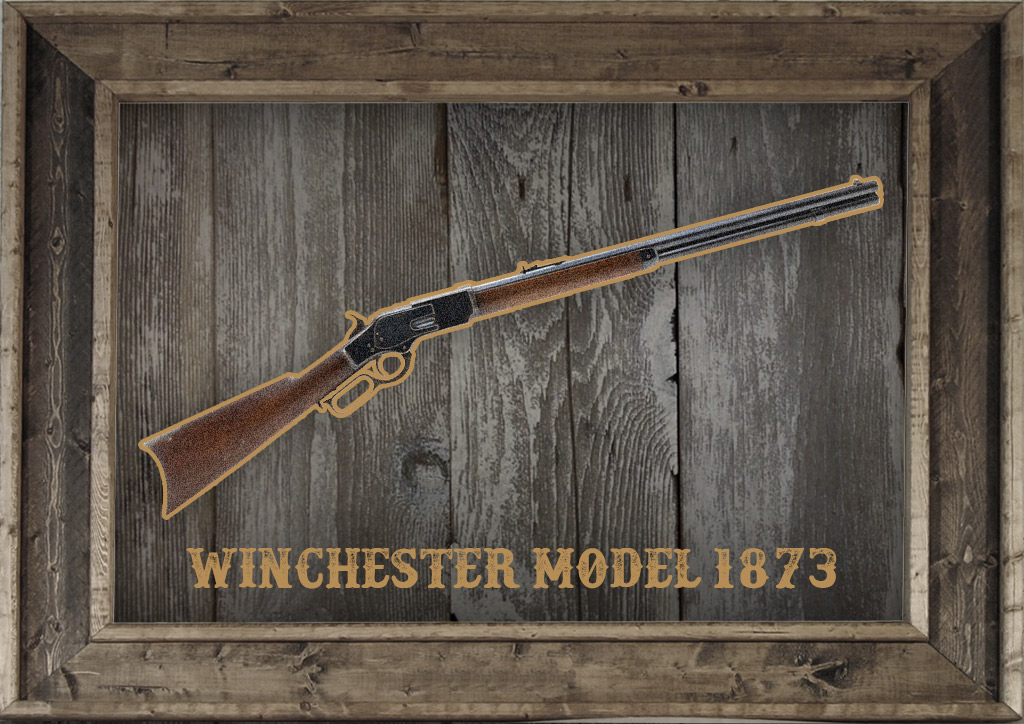
Winchester Model 1873: The gun that won the West.
The Winchester Repeating Arms Company designed and produced the Model 1873 in 1866, but didn’t debut it until 1873. Winchester ended production on this classic lever-action rifle in 1919, having made 720,000 over its lifespan. This firearm offered three available calibers: .44-40, .38-40, and .32-20 Winchester.
The 1873 model helped tame the rugged landscape of the Wild West. Cowboys, lawmen, and outlaws depended on its repeating mechanism that allowed multiple shots without reloading. The Model 1873’s reliability and firepower had no peer in its time, making it an iconic symbol of the American frontier. In 1950, Hollywood paid tribute to the rifle by producing Winchester ’73, a popular film starring Jimmy Stewart.
1874 Sharps Rifle
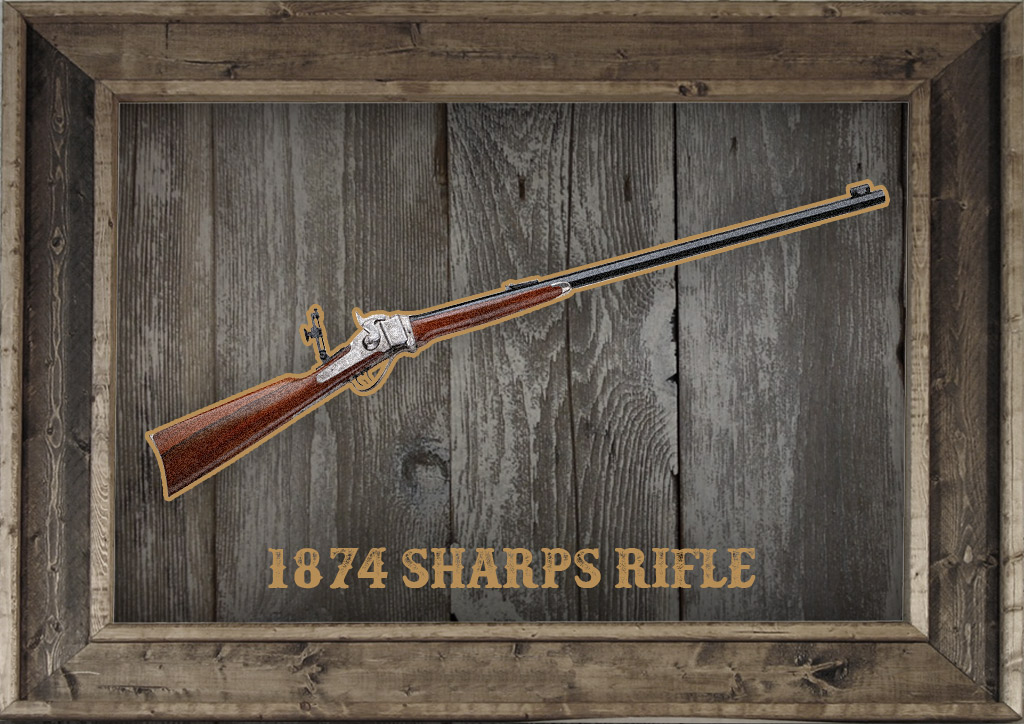
The 1874 Sharps Rifle was renowned for its accuracy and power.
The 1874 Sharps Rifle is a large-bore, single-shot, falling-block, breech-loading rifle. It comes from a design by Christian Sharps in 1848, and ceased production in 1881. A product of the Sharps Rifle Manufacturing Company, it was renowned for its accuracy and power. Notably, this rifle was available in several .40 and .50 calibers, with the .45-70 Government and .50-90 Sharps being the most popular.
Launching in 1874, it became an icon during America’s westward expansion. Buffalo hunters and pioneers favored the rifle for its long range and accuracy, contributing significantly to the extinction of the American bison. In the tumultuous period of the Wild West, the 1874 Sharps Rifle became a trusted tool for survival and defense, matching the era’s independent and adventurous spirit.
Springfield Trapdoor Rifle
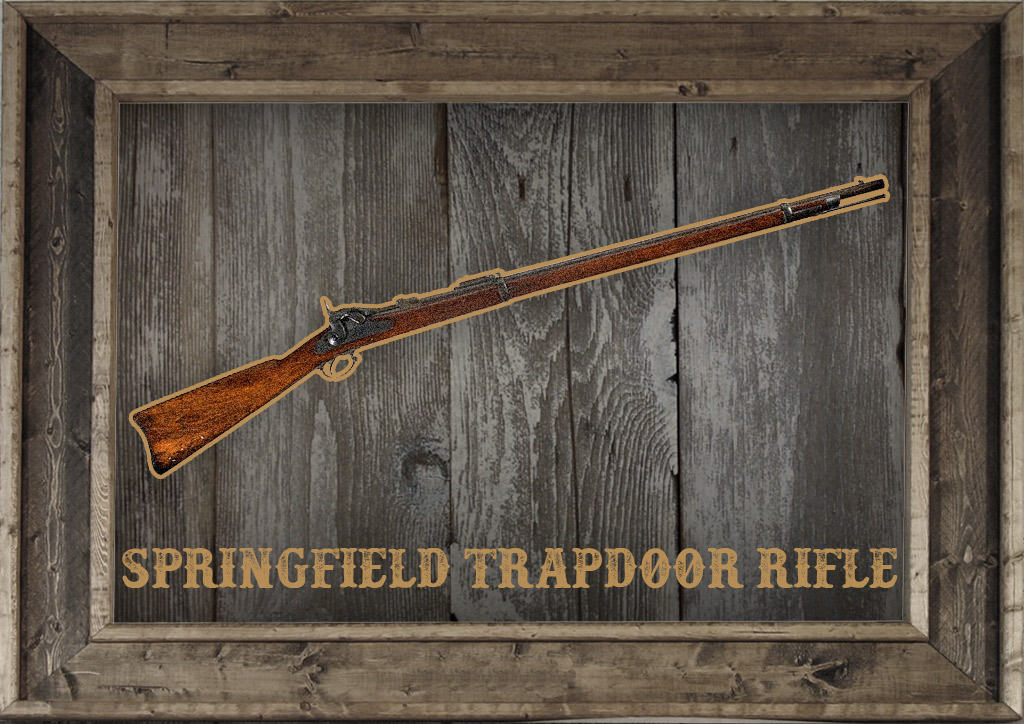
The Springfield Trapdoor Rifle chambered in .45-70.
Erskine S. Allin designed the Springfield Trapdoor Rifle, a .45-70 caliber firearm. The renowned Springfield Armory, famous for its high-quality weaponry, produced the Trapdoor in full-length and carbine versions. This rifle rose to prominence in the late 19th century for its use in battles against Native Americans. Custer’s 7th Cavalry carried Trapdoor carbines into the Battle of the Little Big Horn. In the Wild West, frontiersmen widely used it for hunting and self-defense, and it gained popularity among civilians for its reliability and ease of use.
W.W. Greener Double-Barreled Shotgun
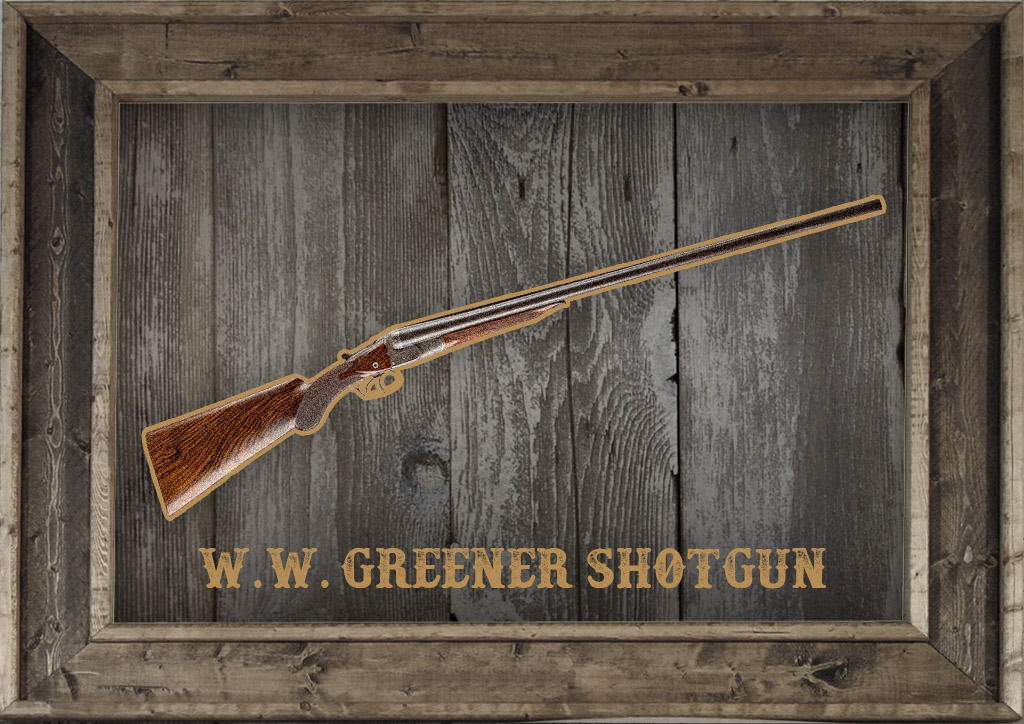
W.W. Greener Double-Barreled Shotguns cost a pretty penny then, and now.
The W.W. Greener Double-Barreled Shotgun is a coveted piece of history associated with the Wild West and its distinctive stagecoach culture. Manufactured by the British firm W.W. Greener, this side-by-side shotgun safeguarded Wells Fargo’s stagecoaches during the mid-to-late 19th century. The gun’s double barrels offered power and reliability, making it an ideal choice for the company’s armed agents.
The shotgun’s large caliber and the spread of its shot made it devastatingly effective at close range, deterrence enough for would-be robbers. Renowned gunmaker William Wellington Greener engineered the W.W. Greener choke bore, a distinct feature for shotguns. The choke bore refers to a constriction at the barrel’s end, controlling the shot’s spread as it leaves the firearm. This ingenious design helped to revolutionize shotgun accuracy and remains a prevalent feature in modern shotguns.
Wild West Guns: More Than Firearms
The guns of the Wild West were not just survival tools – they were also symbols of the frontier spirit. They helped shape an era of discovery, hardship, and the struggle for law and order. Iconic firearms such as the Colt .45 Peacemaker, the Winchester Model 1873, and the Smith & Wesson Model 3 were more than just weapons. They were trusted companions in a vast, uncertain landscape.
Their legacy continues to influence our perception of this pivotal period in American history and serves as an enduring symbol of a time when resilience and resourcefulness were essential.


